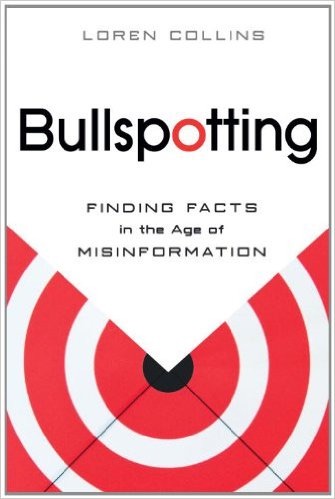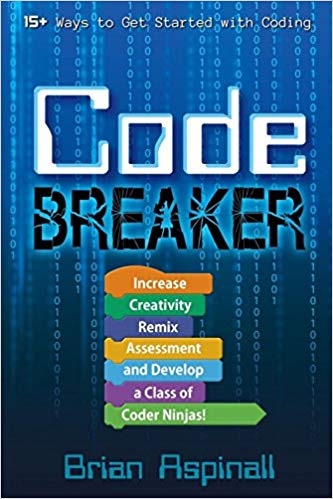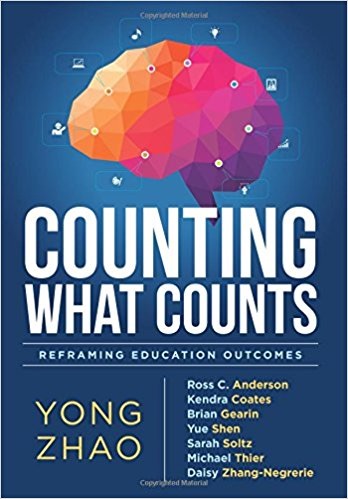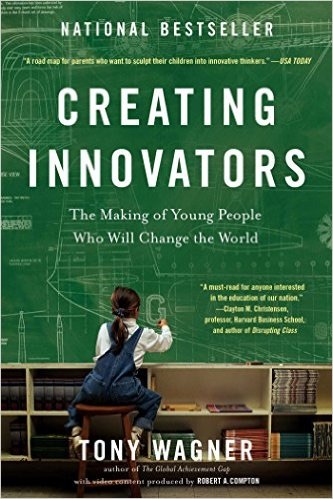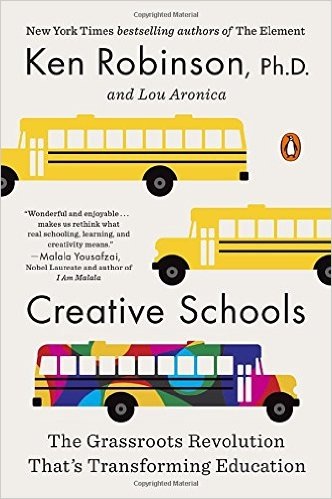Archive for the ‘Leadership Books’ Category
Friday, January 6th, 2017
Bull Spotting: Finding Facts in the Age of Misinformation by Loren Collins will help you spot and avoid lies in a world with more accessible truth and lies than ever. In the age of fake news you can learn how to use the tools of critical thinking to identify the common features and trends of misinformation campaigns. Loren will help you tell the difference between real conspiracies and conspiracy theories, real science from pseudoscience, and history from fantasy.
Loren Collins
- Loren is and attorney and firm associate with the Law Office of W. Bryant Greene, III, P. C. He is the creator of Barackryphal, a website that debunks the fallacies propounded by birthers regarding the birth and citizenship of President Obama. He has written for The Atlanta Journal-Constitution on the topics of misinformation and critical thinking.
1. Baloney Detection
- Operating in the world efficiently depends on one’s ability to identify crap, also known as misinformation. Today we are constantly bombarded with information, which makes crap detection more import than ever. We tend to rely on common sense, but recall that there was a time when common sense told our ancestors that the world was flat. It can be helpful, but we need to look to science to uncover the truth.
- Most of us are not conditioned to distinguish between good and bad sources. We favor information from sources we like and visa versa. We accept information that supports our beliefs, and doubt information that doesn’t. This is know as confirmation bias. Other biases include having our thinking impacted by how something is framed, and putting more weight on recent information.
- People evolved to spot patterns even when they don’t exist and to create stories, myths, to explain the patterns. The ancient Greeks, for example, created different Gods to explain how the world worked.
- A common feature of creative misinformation is the reliance of anomalies. The problem with this approach is that it doesn’t produce a cohesive alternative theory. The idea is that if you can undermine one detail of the consensus view you have disproved it. If you see this in action, it tends to be a good means of spotting misinformation. Occam’s razor tells us that the explanation that makes the fewest assumptions is most likely to be the correct one.
2. Denialism
- Denialism concerns the rejection of truth accepted by experts. In some cases popular opinion denies scientific facts. For example, a 2010 poll showed that 40% of Americans believe humankind was created in our present form less than ten thousand years ago. The primary tactic is to look for anomalies that can poke holes in established theories. Deniers do not advance a cohesive alternative theory that can be tested.
- When confronted with evidence, deniers will often say it is forged or fake. When evidence can’t be denied they may say that it means something else like the Nazi gas chambers were not used for mass killings. Fake experts are also associated with deniers. While they may have college degrees, the degrees are usually in unrelated fields. Subjective experiences and anecdotes are often treated as solid evidence.
Posted in Book Summaries, Business Books, Education Books, Leadership Books | Comments Off on Bull Spotting: Finding Facts in the Age of Misinformation by Loren Collins
Wednesday, July 20th, 2022
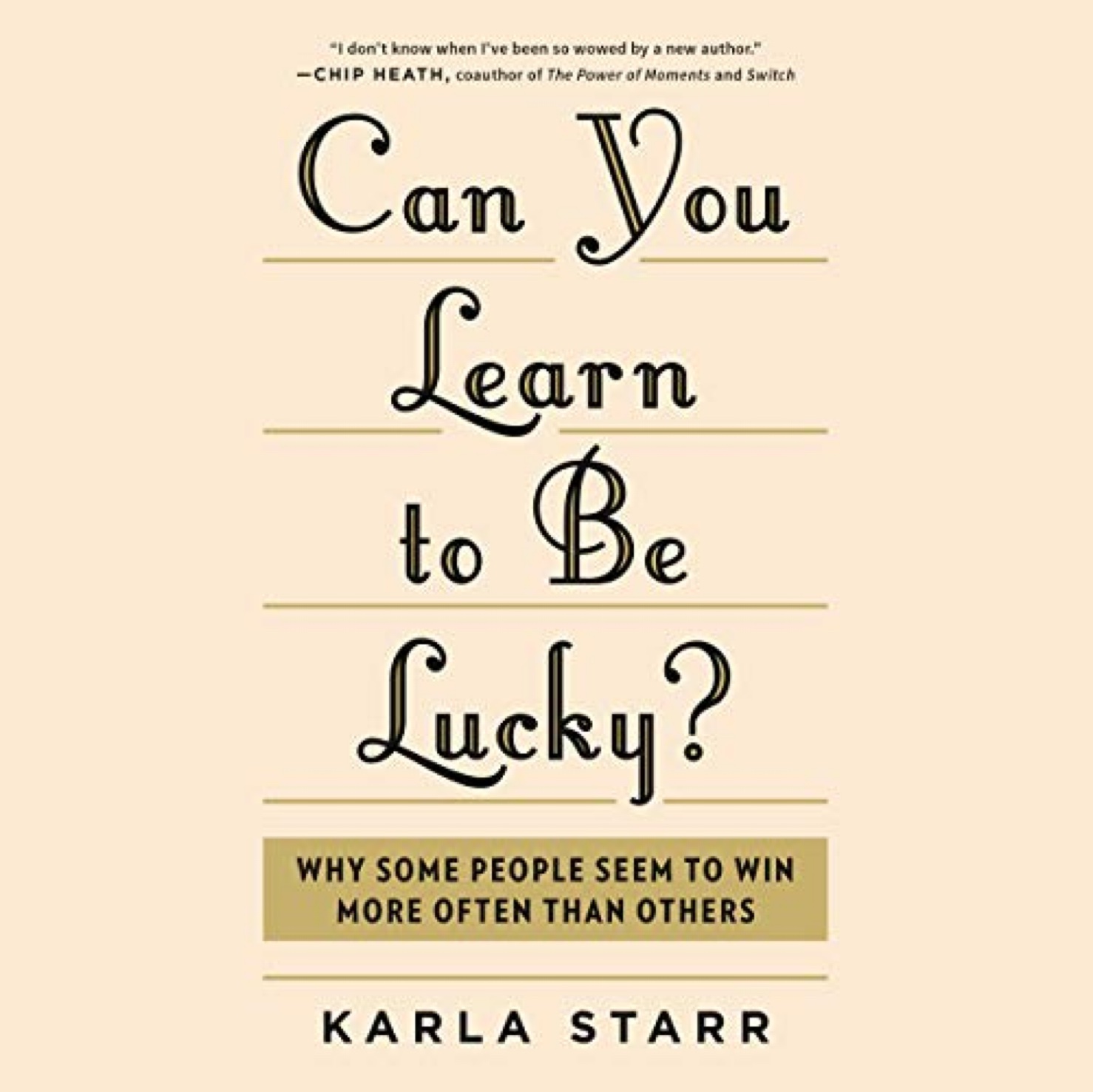
Can You Learn to Be Lucky? Why Some People Seem to Win More Often Than Others by Karla Staff explains in detail how you can increase your chances of being lucky and therefore successful. We all experience good luck and bad luck as we go through life, but with Karla’s help, we can make good luck more likely and take better advantage of it, and better survive and learn from our bad luck. This book belongs in every professional learning library.
Introduction
- This book is about navigating life’s hidden patterns. While there is no way to account for every variable influencing our situation, this doesn’t make the world entirely unpredictable. We need to see the world as understandable and manageable. If you feel unsure about your ability to handle the future, anxiety will follow. Regardless of your merit, frugality, and faith, elements of chance will always be part of your life. This is where luck comes in. A bias toward action, however, can help as doing nothing can lead to learned helplessness. You can’t stumble on to something good by sitting down.
1. Best in Show: Why Lucky Timing Is out of Our Hands
- Studies show that your chances of winning a subjectively scored event are better if you are judged near the end. They also show that prisoners get the best deals if they are judged right after lunch or a break. If you are part of a contest or are interviewing for a job, do what you can to be near the end of the process. Then do what you can to be memorable and emphasize what makes you special or unique. Frame losses as learning experiences and don’t take them personally. And if you want to score with the gender of your choice at a bar, stay until closing time.
2. The Charlie Brewer Principle: How That Warm, Fuzzy Feeling Leads to Luck
- The focus is Charlie Brewer whose father and grandfather were star quarterbacks. Is it any wonder that the coach looked to him to be his next quarterback? If you have some advantage due to your family’s circumstances be sure to leverage it. However, if you are rich and good looking you might get away with being a dick, but it’s not a good strategy in the long run. Charlie’s story deals with confirmation bias. This is a concept you need to understand on the road to luck.
- The other big idea here is availability. By consistently showing up you increase your chances to be lucky. If you are always there you will seem safe, which correlates with luck. The more people see you the more they are likely to like you as long as you are nice. Proximity counts. People who live on the bottom floor have more friends. Kids who sit in the middle of the room are more popular. Your attire is very important. For example, women who show up in a nightclub dress are not likely to be seen as highly capable. Make a good first impression and know that it takes time and effort to build a good reputation.
3. Bitches in Glasses: The Occasionally Unlucky Side of Intuition
- We use our feelings to decide and rationalize our choices after the fact. There are things we can control like grooming, attire, facial expressions, posture, what we say, tone of voice, and body language. We have some control over our body shape and size. We have little control over the shape of our face and our height, and they both count for more than they should. Be sure to act in a friendly manner and smile when you meet someone. Act like you are happy to see them. This you can control and it will help make a good first impression.
- We tend to map traits from people we know on to people we meet who look similar. The feelings we currently feel also impact our impression of the people we are with. Women who don’t smile are judged more harshly than men who don’t smile. People with square jaws and wider faces are more likely to be promoted. Life is indeed unfair. What you can do is throw your hat into the ring every chance you get, use an easy-to-pronounce version of your name, and avoid edgy jokes and weird online IDs.
Posted in Book Summaries, Business Books, Education Books, Leadership Books | Comments Off on Can You Learn to Be Lucky? Why Some People Seem to Win More Often Than Others by Karla Staff
Thursday, April 10th, 2014
Class Rank Weighs Down True Learning by Thomas R. Guskey – Phi Delta Kappan, March 2014, V95 N6, pp. 15-19. This is my summary of this fine article, which makes the point that teaching and grading schemes that work to select the most talented students often fail to benefit all students and to notice promising students. This may cause you to rethink what your high school is doing regarding this matter. Here is the link to the abstract. You will probably need a subscription if you want to view the full article, or you could hit your nearest college library.
Thomas R Guskey, PhD
- Thomas is a professor of educational psychology at the University of Kentucky. He is a graduate of the University of Chicago, and began his career in education as a middle school teacher. He served as an administrator in Chicago Public Schools, and was the first Director of the Center for the Improvement of Teaching and Learning, a national educational research center. He is the author/editor of 18 books and over 200 articles published in prominent research journals as well as Educational Leadership, Phi Delta Kappan, and School Administrator. You can find him on Twitter @tguskey or email him at guskey@uky.edu
Posted in Book Summaries, Education Books, Leadership Books | Comments Off on Class Rank Weighs Down True Learning by Thomas R. Guskey
Tuesday, October 16th, 2018
Code Breaker: Increase Creativity, Remix Assessment, and Develop a Class of Coder Ninjas! by Brian Aspinall shares his experiences and those of some colleagues in the process of teaching coding from kindergarten to high school. It deals with computational thinking which is a fundamental skill at the heart of engineering and mathematics. It includes coding and much more, and can even happen without technology. Make sure your school has a few copies.
Preface
- We live in an era of access as answers to knowledge-based questions can be quickly retrieved. As for coding, we have been teaching that in many forms since the 1960s. Like many, Brian is a self-taught coder. He offers ten reasons for teaching coding. They include building self-confidence, allowing students to create, self-expression, teaching storytelling, opportunities for risk-taking, reinforcing math principles, and teaching problem-solving. It is required for many future jobs, developing teamwork, and helping humanity.
1. The Clarity of Poop
2. A Wing and a Papert
- Here we get some learning theory. Assimilation happens when you incorporate new things into your current understanding. Accommodation happens when you learn new things and have to change what you currently understand. People learn best when they are involved in making or constructing things in the real world. To do this you need some control over your own learning. Learning should be concrete and computers are a good way to teach this. Computational thinking is a fundamental skill and it is at the heart of engineering and mathematics.
- Coding Rock, Paper, Scissors to Teach Probability
- Indigenous Trail: Trees and Coding a Micro:Bit Compass
- What Is Computational Thinking? Computational Thinking can take on a variety of forms.
Posted in Book Summaries, Education Books, Leadership Books | Comments Off on Code Breaker: Increase Creativity, Remix Assessment, and Develop a Class of Coder Ninjas! by Brian Aspinall
Tuesday, December 19th, 2017
Counting What Counts: Reframing Education Outcomes by Yong Zhao and friends takes on the current system with its focus on standardized tests and their sole focus on cognitive skills. Chapters are devoted to defining a variety of non-cognitive skills that are connected with success in life and the current status of how to assess them. They make a case for a new paradigm that would move the system towards more personalized learning and assessment with more focus on non-cognitive skills. Be sure to add this fine book to your professional development library.
Introduction – The Danger of Misguiding Outcomes: Lessons From Easter Island – Yong Zhao
- Yong uses the story of how the natives of Easter Island overexploited the resources in a race to build ever bigger statues. He compares this to the current race to produce students with excellent tests scores. Here he makes the case that the obsession with test scores has and will continue to damage our education ecosystem. It has resulted in cheating, teaching to the test, focusing on students on the pass/fail border, and limiting the focus on subjects not tested. We are destroying teacher autonomy as we ignore real challenges like poverty, unsafe neighborhoods, and unequal access.
- We are striving to produce a homogeneous population rather than supporting diverse talents. Routine knowledge and skills are stressed and they can easily be outsourced or automated. There are many negative side effects that are not considered unlike drug companies that must evaluate and publish side effects of their products. Creativity and non-cognitive skills are ignored. Students good at taking tests might not be good at anything else.
1. Numbers Can Lie: The Meaning and Limitations of Test Scores – Yong Zhao
- Humans are too complex to be reduced to a single number, and such numbers should not be used to make life-changing decisions. Research indicates that IQ tests have limited predictive power. Personality variables like high and stable self-esteem appear to be decisive for life success. SAT and ACT tests are much less predictive of college success than a student’s high school GPA. After many years, the Common Core Standards don’t appear to make students college ready, while motivation, time management skills, and awareness of postsecondary norms and culture do.
- A look at international tests shows that U.S. students have been bad at test taking for a long time. Such scores would suggest that by now the U.S. would be an economic backwater, but the facts suggest otherwise. It’s possible that countries that obsess about tests more than we do have discouraged the cultivation of creative and entrepreneurial spirits.
Posted in Book Summaries, Education Books, Leadership Books | Comments Off on Counting What Counts: Reframing Education Outcomes by Yong Zhao & Friends
Monday, December 5th, 2016
Creating Innovators: The Making of Young People Who Will Change the World by Tony Wagner (© 2012, Scribner: New York, NY) explores what parents, teachers, and employers must do to develop the capacities of young people to become innovators. Tony profiles innovators to identify patterns in their childhood that made them what they are. He shows how to apply his findings to education and tells parents how to compensate for poor schools. Keys include collaboration, interdisciplinary problem-solving, and intrinsic motivation. Sixty original videos are included that you can access via a smartphone. Go to Creating Innovators for a trailer.
A Primer on Innovation
- Innovation is about the process by which new things take place. It involves using novel and creative ways to create value via new products, services, business models, or processes. It involves valuable original ideas or insights that you somehow implement. It’s creative problem solving applied to the real world. Incremental innovation significantly improves products, processes, or services. Disruptive innovations create a new or fundamentally different product or service that disrupts markets and displaces dominant technologies.
- Innovations can be technical like Apple’s iPod, iPhone, and iPad. They can also be social like the nonviolent strategies of Gandhi and M. L. King.
Skills of Innovators/Nature of Creativity
- Tony offers the following as the main skills needed: 1) critical thinking and problem solving 2) collaboration across networks and leading by influence 3) agility and adaptability 4) initiative and entrepreneurship 5) accessing and analyzing information 6) effective oral and written communication 7) curiosity and imagination. It is also necessary to imagine the world from multiple perspectives, see all aspects of a problem, be optimistic, experiment to explore problems with a bias towards action, work with others as the day of the lone genius seems to be over. For places like Google and Apple, intellectual curiosity is more important than smarts. They also want people who will take control of a situation rather than waiting to be lead.
What Is Needed
- Creativity is a habit and like any habit, it can be either encouraged or discouraged. Teachers that value the right answer more than provocative questions tend to drum the curiosity out of students early on. Creativity can be encouraged or discouraged.
- Tony cites work of Teresa Amibile’s who says that creativity or innovation has three components. They are expertise, creative thinking skills, and motivation. She believes that motivation is the most important and that intrinsic motivation has more impact than extrinsic motivation. Tony adds that childhood play should lead to adolescent passion and adult purpose. They are the three interrelated elements of intrinsic motivation. He notes that a disproportionate number of innovative people attended Montessori schools where play is an important part of the curriculum.
What Is Needed
- Knowing how to find those things you are interested in and that motivate you is way more important than specific things you study. This implies that you should put a buffet of opportunities in front of children and let them engage in unstructured play. If a child finds an interest, it should be encouraged.
- Tony tells of a course at Stanford where students work in teams to solve open-ended problems. Most high school and college courses that feature individual competition, specific content, and extrinsic incentives like grades and GPA. What is needed are courses that feature teamwork, multidisciplinary approaches, and the intrinsic incentives of exploration, empowerment, and play.
Tags: Creating Innovators, Innovation, Tony Wagner
Posted in Book Summaries, Business Books, Education Books, Leadership Books | Comments Off on Creating Innovators: The Making of Young People Who Will Change the World – by Tony Wagner
Wednesday, June 3rd, 2015
Creative Schools: The Grassroots Revolution That’s Transforming Education by Sir Ken Robinson and Lou Aronica ©2015 offers advice for educators and policy makers that can bring rigorous, personalized, and engaged education to everyone. As a leading voice in education, it’s vital that anyone interested hear what Sir Ken has to say. If you haven’t seen his number one TED Talk check that out too. Click at the bottom on any page to purchase this necessary book.
Sir Ken Robinson, PhD and Lou Aronica
- Sir Ken is an English author, speaker, and international advisor on education in the arts to governments, non-profits, education, and arts bodies. He was Director of The Arts in Schools Project (1985–89), Professor of Arts Education at the University of Warwick (1989–2001), and was knighted in 2003 for services to education. He is the author of The Element, Finding Your Element, and Out of Ours Minds. His 2006 TED Talk How Schools Kill Creativity is the most watched in history with over 33 million views. Originally from a working-class Liverpool family, Robinson now lives in Los Angeles with his wife Marie-Therese and children James and Kate.
- Lou Aronica is the author of three novels and the coauthor of several works of nonfiction, including the national best sellers The Culture Code, The Element, and Finding Your Element.
Introduction: One Minute to Midnight
- The current reforms are being driven by political and commercial interests that misunderstand how real people learn, and how great schools work. As a result they are damaging the prospects of countless young people. The standards culture is harming students. In response, Sir Ken continues to push for a more balanced, individualized, and creative approach to education. Instead, schools take children with voracious appetites for learning and see to it that their appetites are dulled as they go through school. Current efforts focused on raising standards through competition and accountability do not work, and compound the problems they claim to solve. If you design a system based on standardization and conformity, you suppress individuality, imagination, and creativity. Schools that were designed to produce factory workers resemble factories with their assembly line approach. Current reforms stick with this approach only to be less in tune with the circumstances of the 21st century. Sir Ken thinks that schools need to be transformed not reformed, and that we know how to do it even though we aren’t.
Posted in Book Summaries, Education Books, Leadership Books | Comments Off on Creative Schools: The Grassroots Revolution That’s Transforming Education by Sir Ken Robinson and Lou Aronica
Monday, August 22nd, 2022
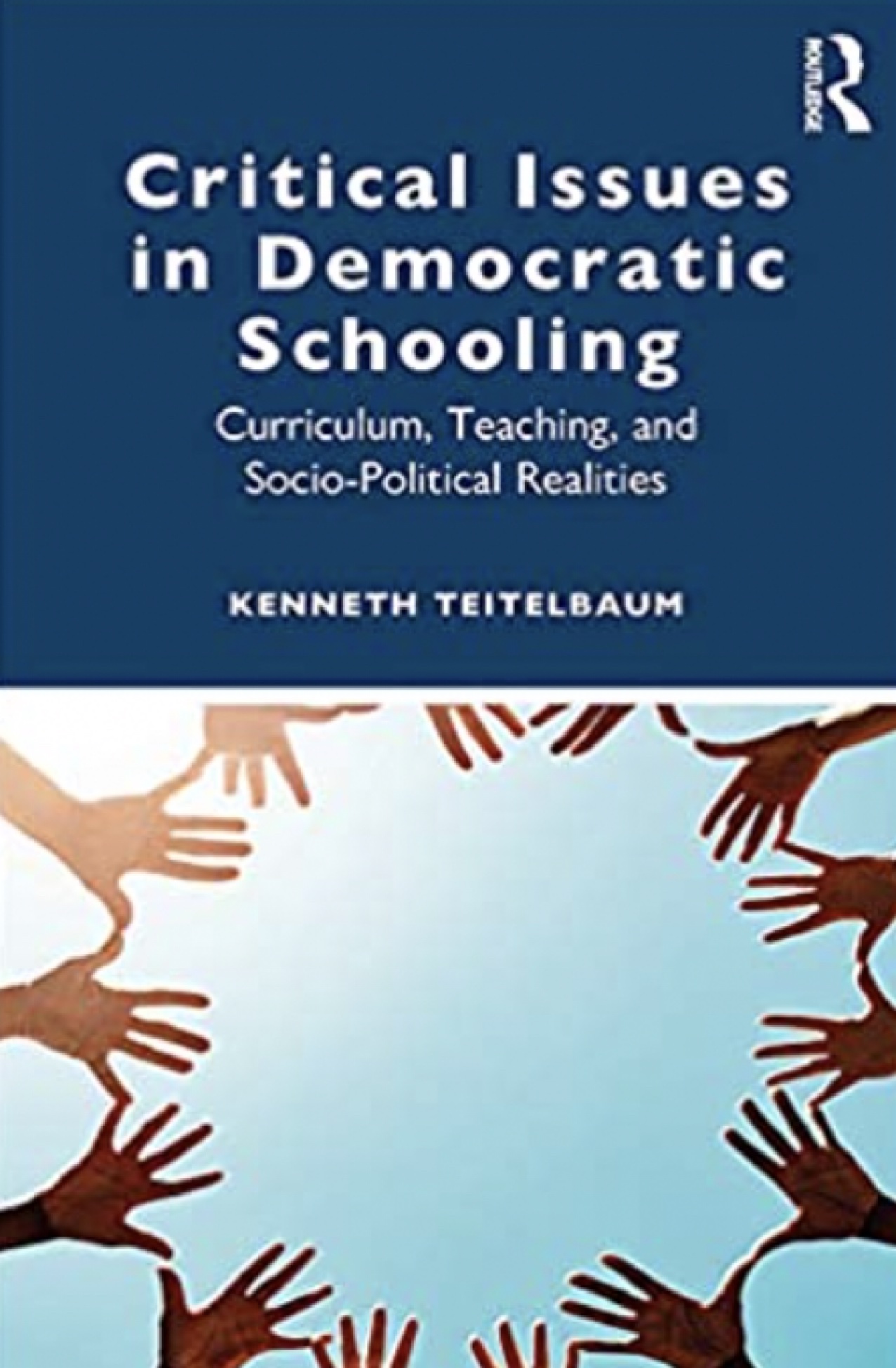
Critical Issues in Democratic Schooling: Curriculum, Teaching, and Socio-Political Realities by Kenneth Teitelbaum is an ideal textbook for undergraduate and graduate teacher education programs. Each chapter can easily form the basis for whole class and small group engaging conversations on topics that prospective teachers need to confront. It’s also a great book that will allow practicing teachers and administrators to question their practices. If you are looking for a book to give all of the teachers in your building for professional development, look no farther.
Part I: Teaching and Teacher Education
1. Teaching Has Its Own Rewards
- Teaching is a profession for those who want to create and inspire, for those who love learning, for those who care about our future, and for those who like to watch young people develop. Students don’t reveal what they are thinking or learning. The most important learning is difficult to capture and may not be known until much later. Likewise, the rewards of teaching are also difficult to measure. (Doug: Like Ken, positive feedback from former students and parents always makes my day.)
2. Despite What Some Think, Teaching Isn’t Easy
- This thinking emanates from the fact that mostly women taught in the last 150 years. A child’s education begins at home so all parents are essentially teachers. Stresses faced in the home and elsewhere outside of school impact behavior in school add difficulties when it comes to dealing with emotional issues and evolving subject matter. The questions of who selects the content and what content to select are also central. Decisions regarding how to deliver content seem endless as are the roles that teachers are expected to play. Time may be the biggest constraint. Teachers, therefore, need proper support and compensation.
3. Reasons to be a Teacher
- It certainly is not the money. Ken’s research and my own show that teacher salaries have not kept up with inflation since I started in 1970. There has also been some erosion in benefits and loss of autonomy due to test-driven expectations and their repercussions. Many teachers work well beyond the 40-hour work week and most will tell you that students have become more unruly over the years. This may have caused fewer people to prepare for a career in teaching, but the current shortage should make jobs easier to find.
- Ken finds seven reasons that still draw people to the profession. 1) Independence and Collaboration: To some extent, teachers are free to decide how they will present the desired content. They should also be able to work with other teachers, although the time available to do so depends on leadership. 2) Lifelong Learning: If teachers seek excellence, they are always thinking about how to improve. As lifelong learners, they will enjoy learning and improving daily. 3) Creative Imagination: Taking reasonable creative risks will make teaching more fun for all. This will help you avoid getting stuck in a rut but consider discussing such risks with your supervisor. 4) Forever Young: Lighting fires in young people is exhilarating and revitalizing. It keeps you stay hip and young at heart. 5) A Noble Profession: In spite of the fact that the media often bashes schools, teaching is widely considered a noble profession by the public. 6) Helping to Create a Better World: Teaching is a profession of hope, and even though you won’t know exactly how you made the world better, you will believe that you did. 7) Student Growth: We all have stories about teachers who made a difference in our lives. You may not see incremental growth daily, but it’s there.
4. “Work With What You’ve Got”
- If you see oppression or injustice in any form be sure to speak up. If you see that school practices or policies at any level are ineffective say so. You may not have all the autonomy you want, but work with what you have. You have to believe that schools can change over time for the better. You may have to make some small compromises, but they are probably worth it.
5. Lessons from Alternative (Progressive) Schooling
- These schools are mostly private so the students are more likely to have more means and skills than typical public school students. Ken has worked in, visited, and read about such schools. In essence, the students are much more in control of what they study, the teacher talks less, and usually intervenes when students need help with skills necessary to pursue their chosen learning. Students are essentially self-directed learners, which requires skills that poor students may not have.
- While such schools are not noted for the longitudinal follow-up that can determine how their students did, the data available suggests that the students do fine and tend to be happier and more self-confident. The atmosphere of trust found at these schools could account for that. Creativity, problem-solving, and project-based learning are seen throughout the day. Ken hopes to see more of this in public schools in spite of the roadblocks created by standardized curriculum and testing.
Posted in Book Summaries, Education Books, Leadership Books | Comments Off on Critical Issues in Democratic Schooling: Curriculum, Teaching, and Socio-Political Realities by Kenneth Teitelbaum
Sunday, November 3rd, 2013
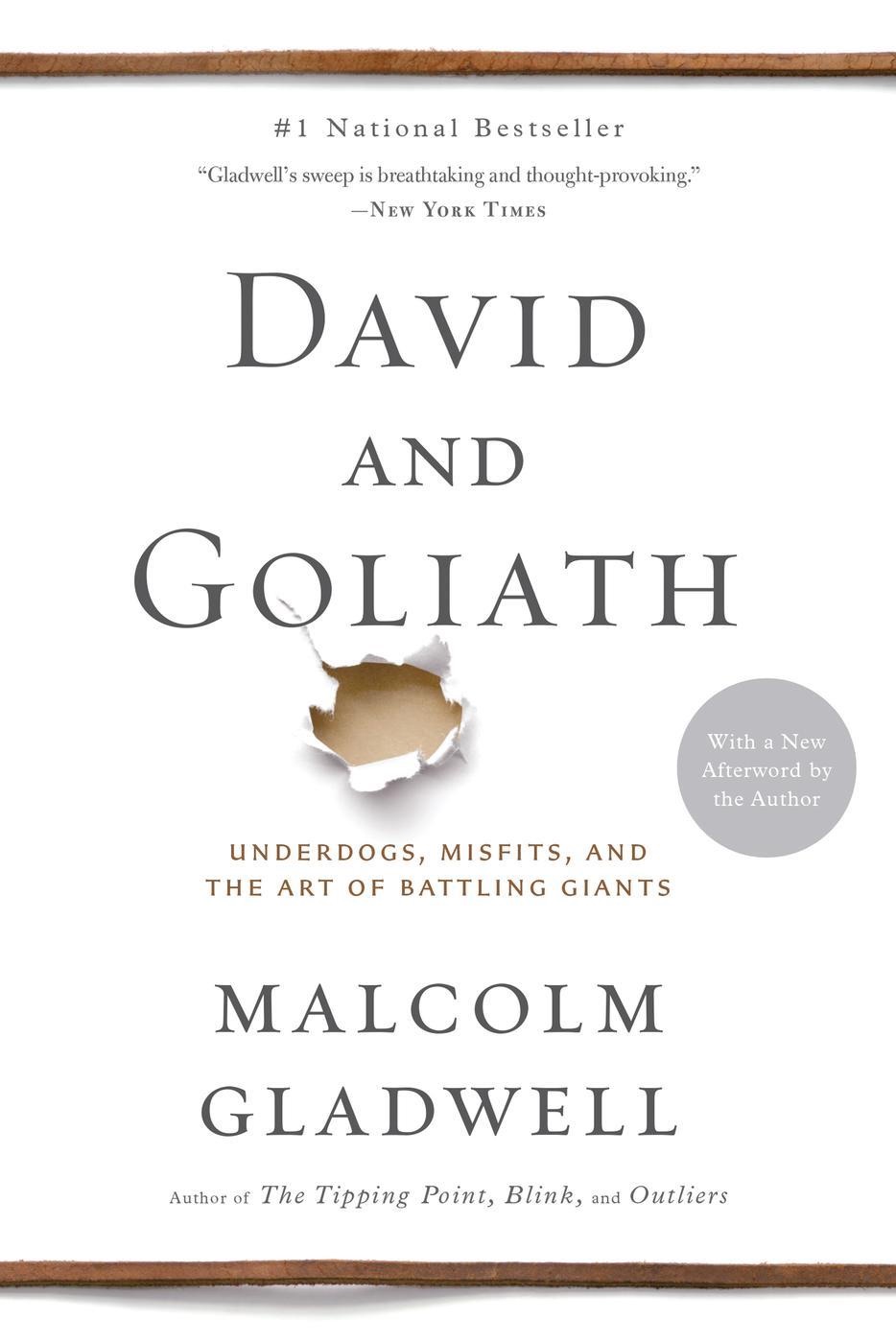
David and Goliath: Underdogs, Misfits, and the Art of Battling Giants is Malcolm Gladwell’s fourth best-selling book to be summarized here. I’ve been a big fan ever since I summarized The Tipping Point. If you like to give books as gifts, please click below and get copies for yourself and your favorite bookworms.
Why Goliath was the Underdog
- In the story of David and Goliath, it turned out that it was Goliath’s size that made him a better target for David’s sling. Warfare of the time featured cavalry, infantry, and a third group that fired projectiles like arrows and rocks. The infantry represented sitting ducks as they were relatively stationary compared to the cavalry. The humble infantryman, however, had better odds taking on a charging horse with a spear to the belly. Calvary could take on the projectile boys as they were moving targets that were much harder to hit. This is like a game of rock, paper, scissors were the odds depend on the matchup. For Goliath, facing a slinger like David was like facing a modern rival with a handgun.
Use Your Assets, Hide Your Weaknesses
- Gladwell uses the David and Goliath story as a metaphor for how we should not always assume that the people who seem to have the upper hand really do. He tells a number of stories of how people who didn’t seem to have a chance won the day. One features a man from India who decided to coach his daughter’s basketball team. His girls were not especially tall or skilled, but he changed the odds by changing how the game was played. He realized that the other teams didn’t defend over half the court. When he put in a full-court press that lasted the entire game, he found that there were enough turnovers which lead to easy baskets to allow his team to triumph over superior talent.
- There is also the story of Lawrence of Arabia whose troops were successful because they took advantage of their main asset, which was speed. This showed that material resources are not always an advantage. Rather than trying to improve on your weaknesses, sometimes it is better just to hide them.
- Even wealth can be a disadvantage when it comes to raising kids. Malcolm tells the story of a successful businessman who worked in his father’s scrap metal yard. It was hard, dirty work and it made him realize that he needed to work hard to make sure he would enjoy a better future. It was his family’s very lack of wealth that gave him the qualities that allowed him to be wealthy today. Ironically, he now has a problem as his kids want for nothing. He fears they won’t develop the qualities that made him successful. While poverty can be stressful and debilitating, it seems that just enough wealth can make you relatively happy while still letting you develop desirable qualities. The same also seems to work for class size as classes that are too big or too small have their own downsides.
Posted in Book Summaries, Business Books, Education Books, Leadership Books | Comments Off on David and Goliath: Underdogs, Misfits, and the Art of Battling Giants by Malcolm Gladwell
Wednesday, December 14th, 2022
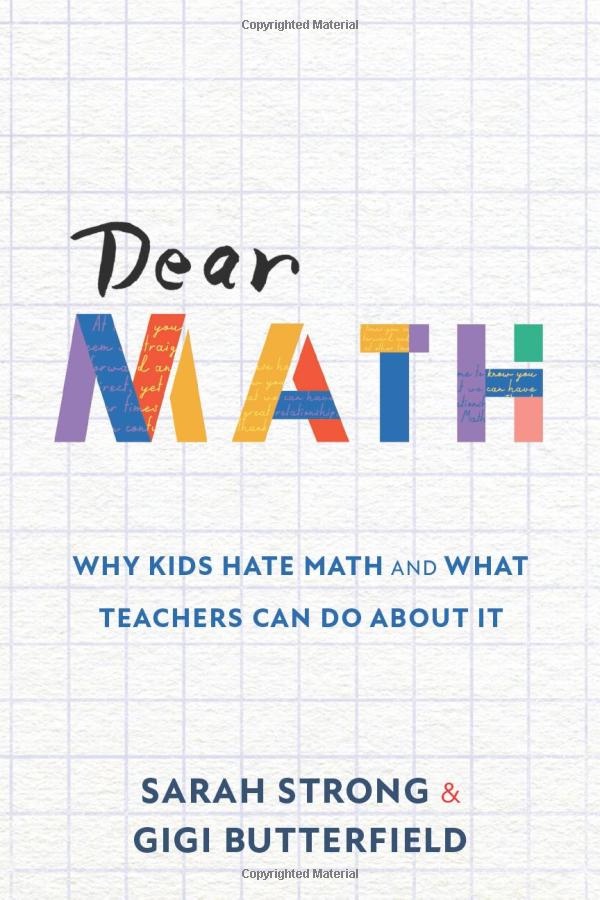
Dear Math: Why Kids Hate Math and What Teachers Can Do About It by Sarah Strong & Gigi Butterfield shows how teachers can use students’ “Dear Math” letters to get to know their students better and draw them into learning. There is an emphasis on creating a community of mathematicians in a project-based environment. Be sure to get a copy for any math teacher you know. Thanks, Sarah and Gigi.
1. Dear Math, You Are Dreadful
- Start by telling students that you need to get to know them as mathematicians so you can design and facilitate their math lessons. They will all write “Dear Math Letters” for you to read. To help them get started, give them one of the ten prompts listed on pages 25 and 26. For example, what is one way that math has helped you grow? As you read the letters, be prepared for a large dose of negativity, as math is not the favorite subject of most students.
- As you read the letters, give feedback and look for connections and commonalities. As you teach, mention things from letters anonymously. Consider having students read each other’s letters. This will help develop empathy between students. Weekly letters should help you determine what was valuable and what wasn’t.
2. Dear Math, You Are Hierarchical
- The hierarchy here comes from the natural sorting of ability from high to low that happens in classes generally and perhaps more often in math classes. The goal, then, is to disrupt any existing hierarchy or prevent it from happening. Disruption of this metaphor begins with forming close relationships with others. People with close relationships are not likely to compare themselves to each other. Being better connected also improves the quality of group work.
- Sara’s main tool is what she calls “Belongigness Buddies,” although you can call it something else. Buddies check in on each other daily in person and using social media tools. While the check-ins largely involve content, students are encouraged to include feelings. The teacher also buddies with students who have attendance issues. Absent students can use FaceTime or Zoom to attend class virtually.
3. Dear Math, You Are Unnecessary
- Teachers, in general, need to be prepared for the “why do we have to know this?” question. Use Internet search if you need to, and it’s ok to say, “I don’t know, but think of this concept as a puzzle that will be good for your ability to solve real problems.” Knowing why they need to learn something adds to a greater sense of agency, the ability to construct new knowledge, and the ability to look critically at new information.
- Math isn’t pointless and shouldn’t feel that way. Sarah likes to start classes with an image of some sort. She also makes use of story problems, also known as word problems but with more captivating stories. After they read the story, she asks, what is this story about? What are we trying to solve for? What might a potential answer look like? (estimation)
4. Dear Math, You Are Intimidating
- The three sources of intimidation or anxiety are home, society, and classrooms. Often times a parent’s doubt about their own math skills can contribute to a student’s feelings. Similar messages are also found in our media. Teachers and faster learners are also a source and these are feelings that lead to lower performance.
- The goal is to design class activities to disrupt intimidation. Sarah describes a “Daily Discourse” activity designed to do this. It’s a ten to fifteen-minute activity led by students, with all students taking turns leading the discourse and taking notes. Gigi reminds us that the opposite of intimidation is encouragement.
Posted in Book Summaries, Education Books, Leadership Books | Comments Off on Dear Math: Why Kids Hate Math and What Teachers Can Do About It by Sarah Strong & Gigi Butterfield
